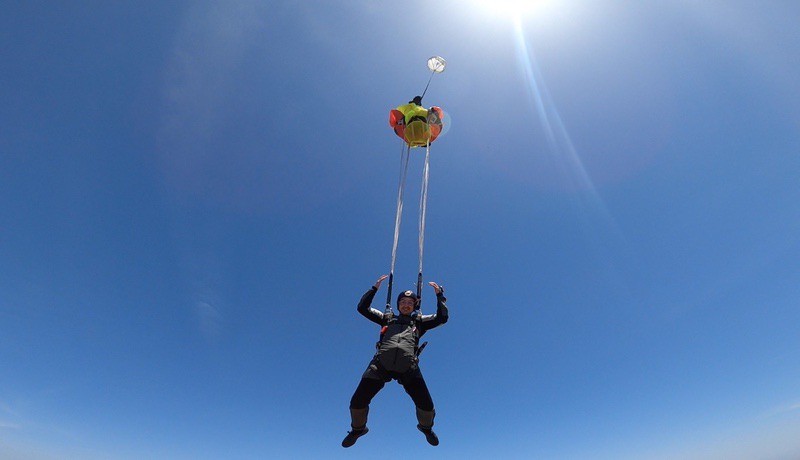Can I have my tandem skydive filmed?
Yes, it is possible to have your skydive filmed and photographed. For the tandem skydive your camera flyer will exit the aircraft with you to capture your free fall experience. Also there is a hand camera option, which gives you more options as filming the flying under the canopy too. As a result it is only possible for each camera flyer to film one person at a time. The video and photos will be send to you vie email link.
On the other hand no, you cannot take your own camera on your tandem skydive.

I wear glasses or contact lenses, will this be a problem during my tandem skydive?
There is no problem! Goggles are worn by all skydivers and these will keep your spectacles or contact lenses protected and firmly in place.
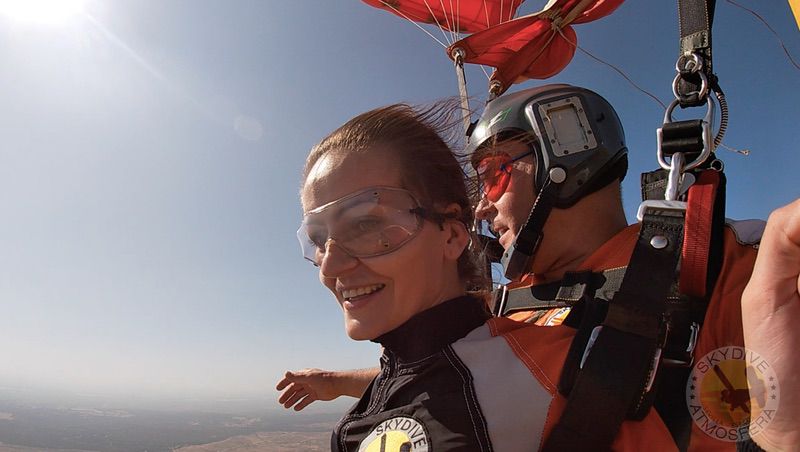
Age, weight and height for the tandem skydive
Age & Weight
- The weight limit with clothes and shoes on for tandem skydive is 95 kg (15 stones or 209 lbs), each jumper is weighed when they check in on the day of the jump. The weigh have to be measured with clothes and shoes. Notice that we also take into consideration the BMI and this should be lower than 27.5.
- Minimum age of 16 years. Those under 18 must have parental consent either by a notarised signature on our Skydive Spain membership form and fitness form OR the parent must come on the day of the jump and sign the forms in person with their ID to support it.
- If you are aged 70 years or over, you will need your doctor to sign and stamp a Skydive Spain medical form. Without this form, you are unable to jump. Please request the relevant form.
- If you have doubts about your medical conditions, please check the section Self Declaration of Fitness to Skydive in our e-waiver.
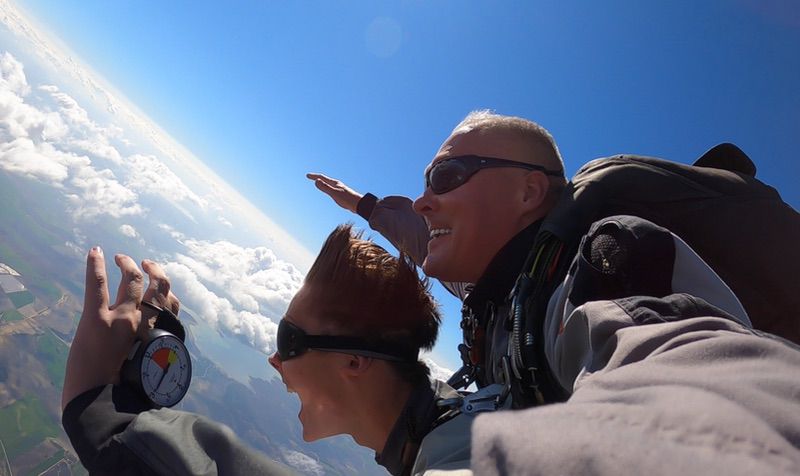
What should I wear/bring for my tandem skydive?
This will depend on the time of year you are jumping. During the colder months it is advisable to wear several warm thin layers. In the summer you could wear shorts and T-Shirt! Trainers or flat soled shoes are ideal footwear. You will be given a jumpsuit to wear over your clothing along with a helmet and goggles.
There is a bar on the dropzone, so you don’t need to bring snacks, unless you have some favourite ones 😉
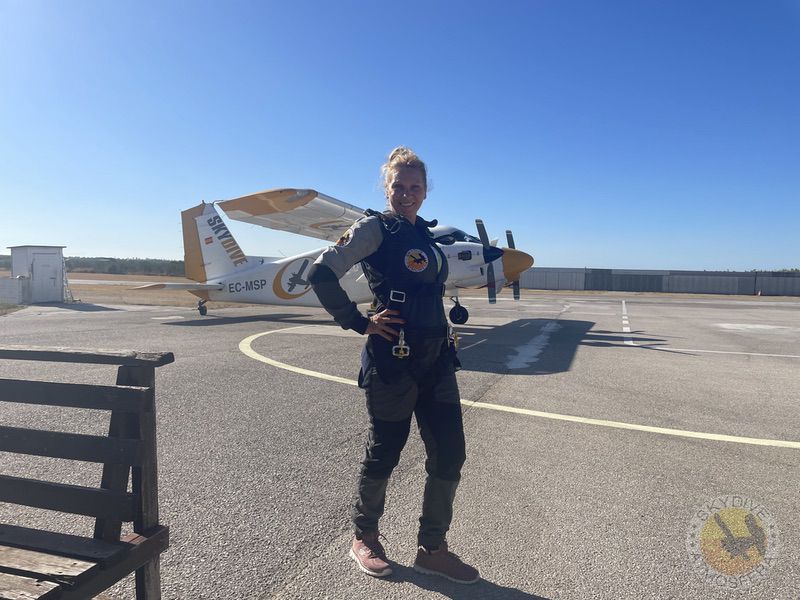
What if the weather is unsuitable?
All aviation activity is dependent on suitable weather conditions, of which we mostly have in southern Spain. However, weather conditions such as rain, heavy low cloud or high winds can all prevent your skydive going ahead. If you cannot complete your skydive due to weather conditions you will be able to arrange another date. You have up to 12 months from your original jump date in which to re-book your skydive jump or the course. If your original booking was with a discount coupon or for a promotional item with date restrictions for the jump and you rebook outside of those dates, there will be additional charges to increase your payment to the standard price.
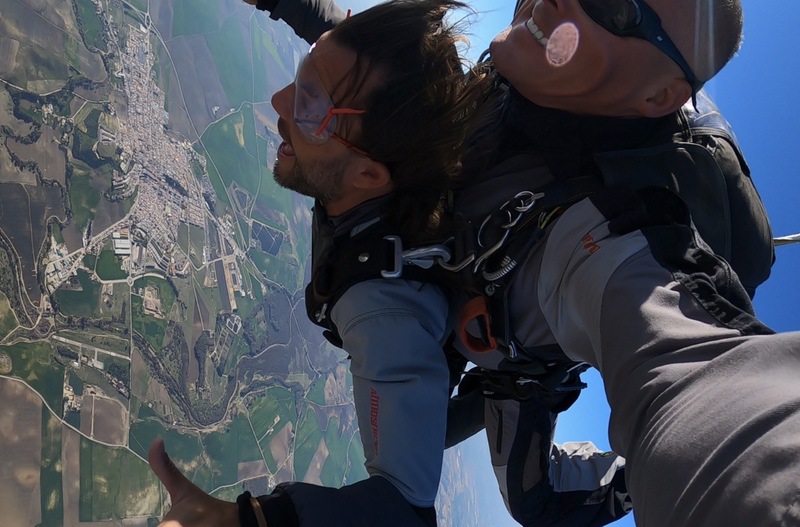
How long does the tandem skydive experience take?
When making a booking you are given an arrival time on the day of your jump. This is the time we want you to arrive at the office on the dropzone to register for your jump, this is not the time of your jump. For individual bookings or small groups of up to 3 people, we endeavour to complete your experience within 3 hours of your arrival time. Obviously for larger groups, the completion of all jumps can be considerably longer. Due to the many variables which affect our sport we advise that you keep the whole day free. Please be as prompt as possible, because we operate on a ‘first come, first jump’ basis. This means if your arrival time is 10am, and you are late, there is a chance the customers booked in at 10.30am may arrive before you, and they will jump first.

Can I eat before my skydive?
Yes, you can. There is no reason why you should not eat normally on the day of your jump. We recommend also drinking plenty of water, especially during the summer months. The heat, the waiting and the excitement will take a lot of your energy and you will be feeling much better if you have eaten normally.
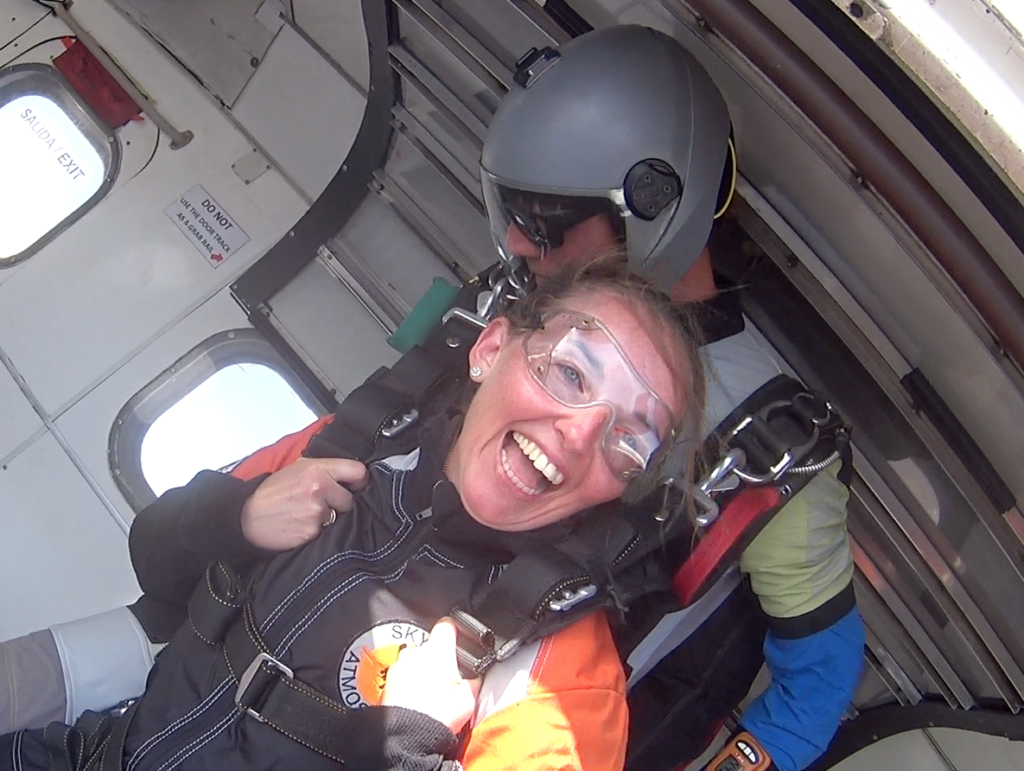
Can I bring friends, family and pets to watch?
You can bring any spectators along, but please make sure that children are supervised at all times. No alcohol can be consumed before/during the activity and alcohol is not permitted out of the café/bar areas. The airfield provides a restaurant and terrace for refreshments afterwards. No pets (dogs) are permitted on the airfield. Please remember we are on an active airfield, and we reserve the right to ask any spectators to remain in the café/bar areas.
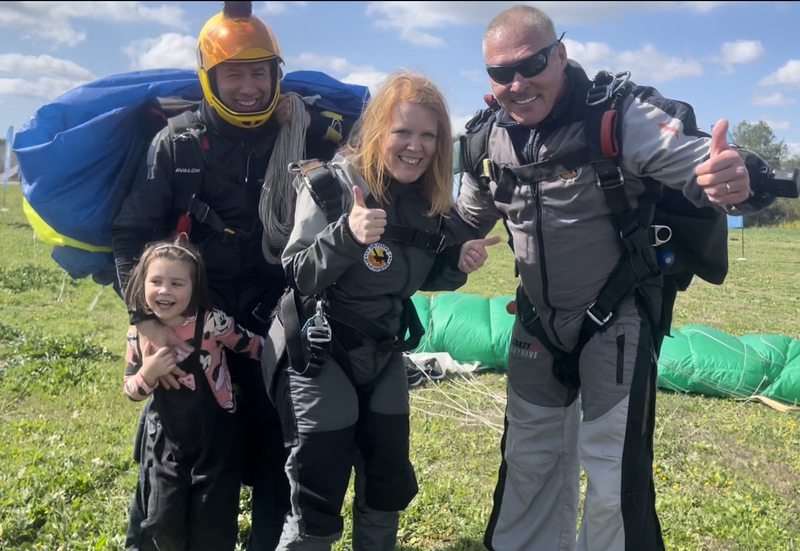
Is skydiving scary?
Skydiving isn’t scary at all. You may find this hard to believe, but skydiving is one of the most awe-inspiring life experiences in the world. What makes the experience scary is everything leading up to the moment of exiting the aircraft.
And this is where the real fun begins!

How long can you free fall before opening your parachute?
On average, you fall 200 feet per second during a skydive. From 10,000 feet, this means you’ll be in freefall for approximately 30 seconds. From 15,000 feet, you’ll fall for 70 seconds. From 18,000 feet, it’s about 90 seconds.
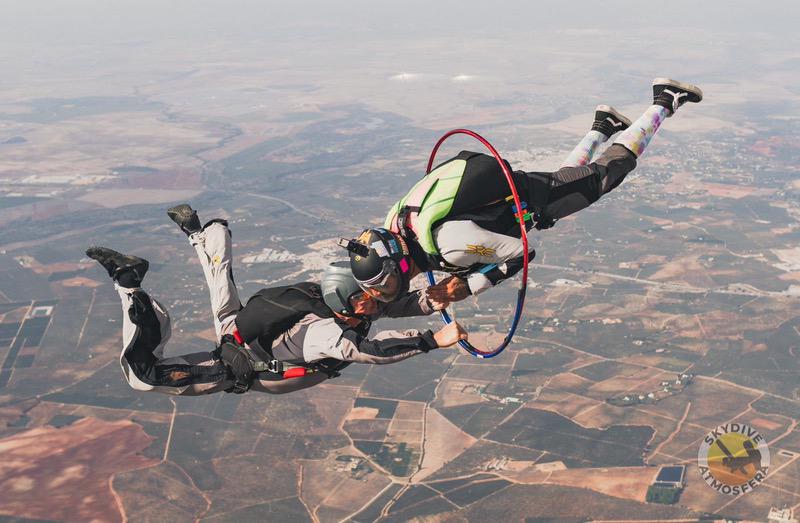
What if the parachute doesn’t open?
Parachutes properly deploy 99.9% of the time. Even when skydiving equipment is frequently assessed and replaced, the unexpected can happen. Even seemingly properly packed parachutes can fail, with one in every 1,000 skydives not always operating at 100% efficiency.
So when a skydiver finds himself in a position where his main parachute isn’t opening or has opened with an error, they simply remove that parachute and deploy their reserve parachute instead. This is called „cut-away procedure”. Known as „Fuck you – Rescue you” rule ;).
If the skydiver is unable to deploy the main parachute or becomes unconscious at any point during the skydive, the AAD comes into play. It will automatically deploy the reserve parachute for you, allowing you still to land safely.

Can you breathe while skydiving?
You absolutely can breathe while skydiving! You should be able to take normal breaths in freefall and under the parachute just like you would on the ground. There is plenty of oxygen available to you for the entirety of your jump – in unlimited supply, in fact!
However on your first jumps in an open helmet, you may experience a sensation of air blocking your breathing. It’s totally normal. Just try to look out of the window in a car riding 120 mph! But no worries and no stress. Breath normal and everything will be as on the ground!
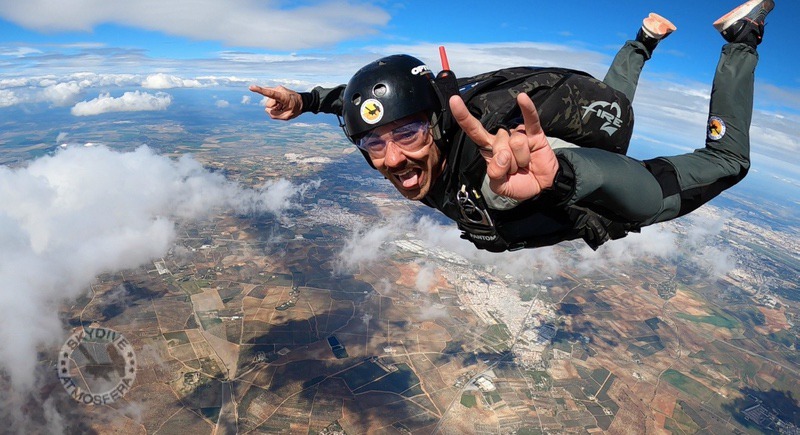
Will skydiving change my life?
Skydiving changes your life because it brings new people into it to share experiences with. After jumping, you’ll find out that a ‘skydive family’ is a real thing. The community you enter into initially out of a united common interest ends up becoming a source of socialization you can enjoy for many years to come.
On our experience, skydiving can make true bonds and often relationships, so don’t hesitate and start this adventure!

Is skydiving worth the money?
If you’re looking to broaden your horizons and reach new heights with a skydiving facility that prioritizes safety, skydiving is well worth the money. And, even more than that, skydiving is worth approaching with an open mind. And it’s much more in real world fun than watch it on TV.
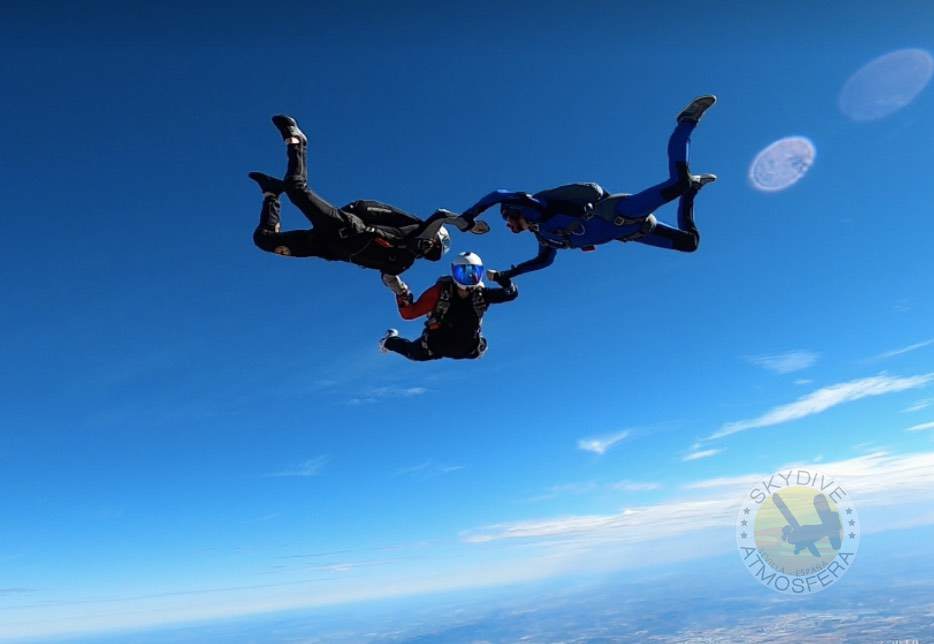
What is the refund policy?
All deposits, full payments and gift vouchers are non-refundable. However, we would transfer the skydive to another person of your choice should you need to do so. The person replacing you must conform to the relevant age, weight and health requirements (see restrictions for details). Any transfer of name must be done 10 days prior to the jump date or voucher expiry date. This rule applies to tandem skydive and AFF course. One started, the AFF course is non transferable.
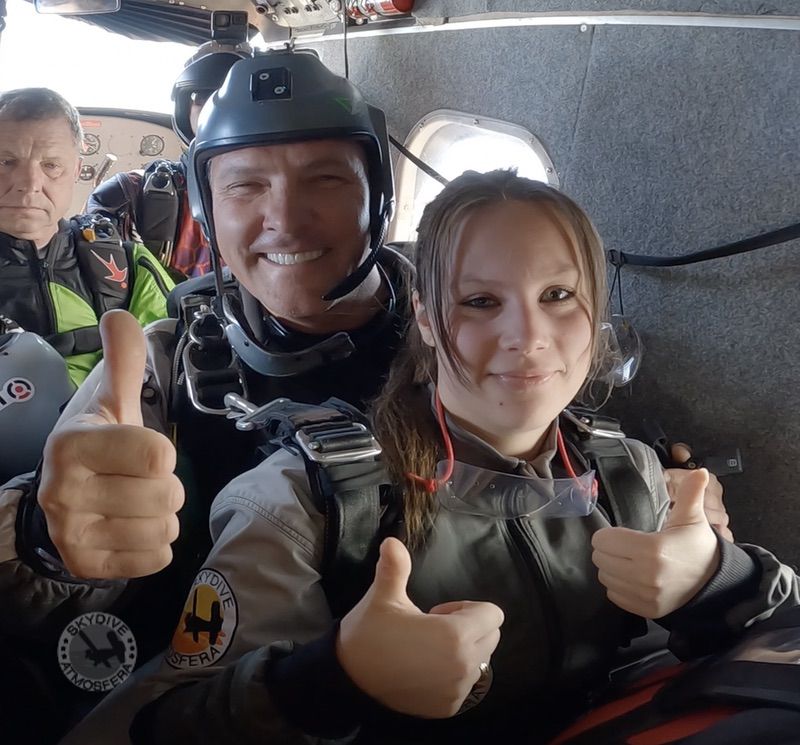
How long is AFF course?
AFF course duration depends on several factors, such as your progression, weather limitations, other possible technical issues. Generally is takes about 5-7 days, although we recommend 10 days stay to ensure enough time for either training or relax and sightseeing.
Should I skydive if I’m afraid of heights?
Many people don’t think they can skydive because they’re afraid of heights. We’re here to tell you that–as weird as it may sound–fear of heights doesn’t matter a bit on a skydive.
Is skydiving safe?
According to the most recent data gathered by the United States Parachute Association, of the 3.3 million skydives that were completed, there were 15 skydiving fatalities. Based on this data, that is a 0.00045% chance of dying on a skydive. The statistics for dying on a tandem skydive are even less.
However we believe the statistic of dying in a car or moto accident are far more probable than during skydiving. This is due to a very strict safety rules and regulations obligatory in this sport.
